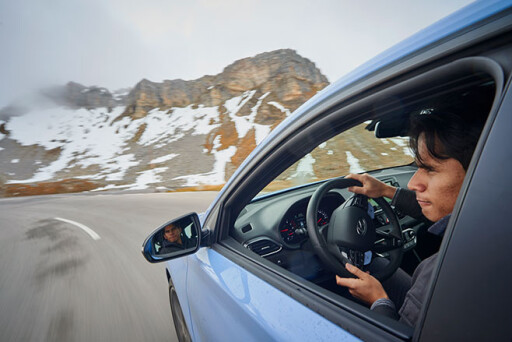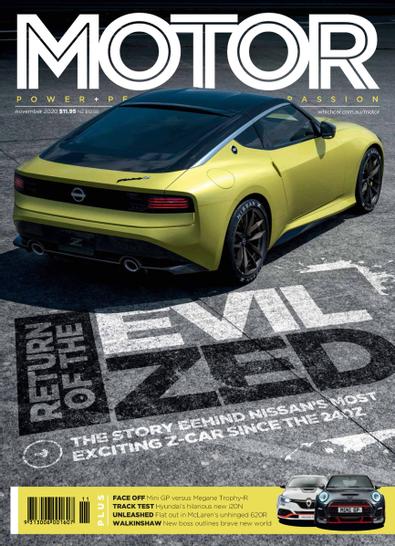
The drive through Italy that delivers you at the foot of Austria’s highest road is nothing like a sweaty trek across the desert.
But just as you’d curse a sandstorm that shrouds the Giza pyramids just when you arrive, the fog lurking behind the Grossglockner High Alpine Road’s southern toll gate has tinged us with the same disappointment.
We’re here on the north-west tip of Carinthia, in Austria’s south, ready to rip up supposedly one of Europe’s greatest driving roads. A glance at its website hints this should stack up as a wonder of the driving world.
This feature appeared in MOTOR magazine - grab it now by subscribing right here!
Its 48km of twisting tarmac looks so smooth, petrol heads might think they have died and gone to heaven, while at its highest point you’re actually already 2504m of the way there. But it’s the 36 hairpins littered on either side, connected through sweeping bends and dog-leg corners that should convince us it’s worth delaying the afterlife.
That might prove challenging today, though, since the autumn air has laid a thick layer of fog on a road dampened by a night’s rain.
We’ve arrived a couple of months before the roads close in late October (and long before Covid-19 was a glint in Bill Gates’ eye) which, judging by the lack of anyone else at the toll gate, is a good way to have the road to ourselves.
Our snapper Tomo says the weather was perfect a week ago on a recce, proving you could roll the dice and wait for clear skies, but since my flight out of Munich is booked tomorrow it’s now or never.
.jpg )
I’d feel better about blasting into a white abyss in something all-wheel drive but the Hyundai i30 N I’m in is not a bad consolation.
With the European Performance Pack it’s exactly as you’d find one in Australia except for the steering wheel on the left, with a full-fat 202kW/378Nm turbo four-cylinder, adaptive dampers and 19-inch wheels on Pirelli P Zeros.
Add an electronic-locking differential as well as a six-speed manual, and mechanically you could say it’s like a Ford Focus RS LE with its propshaft removed.
The i30 N has also scaled mountains of its own in recent years. Hyundai tackled a tall order when it asked for a seat at the table with Volkswagen’s Golf GTI, Renault’s Megane RS and Ford’s Focus ST.
But the fact Ford went as far as to buy its own i30 N as a benchmark for developing the new Focus ST only confirms the marque has arrived.
Still, that’s no guarantee driving nirvana lies ahead in these conditions, and it’s hard to tell if Helga sitting in the booth is smirking because she thinks we’re stupid or whether it’s nice to see a face on what will be a quiet day. Let’s see.
I hand over 37 Euro (or around A$60) to lift the boom gate and take a brochure, which suggests you can use the day to hike, peruse the multiple exhibitions littered around the surrounding park or try to spot a marmot.
Marmots? They look like wombats, except if you hit one at the 100km/h speed limit then you’re more likely to help local industry than destroy a front bumper, given they’re much slimmer and their fat is sold as an ointment in the tourist shop.
But the furry natives are in luck as we’re virtually blind while trundling along these first kilometres. 
We pass the road that leads to the lookout on the Grossglockner mountain and continue up the High Alpine Road. As the temperature drops to single digits we steadily climb out of the mist and I lower the windows to enjoy the crisp air. I also seize the chance to floor the throttle.
‘Braaap!’ The Hyundai’s inline-four enjoys inhaling the cold air, too. Over time it’s been easy to forget how mighty the i30 N sounds, growling down low as that twin-scroll turbocharger sucks through an enlarged intake before building into a hoarse roar, like a baby grizzly yawning.
It reminds me that the i30 N’s architect, ex-BMW M chief Albert Biermann, would get along with this road’s construction engineer Franz Wallack.
While the road importantly created Austrian jobs in the 1930s, it was born to attract tourists, rather than trade, to the surrounding Hohe Tauern National Park.
It was built for enjoyment. And that explains why after it was opened the Austrians celebrated in 1935 by unleashing an international list of racing cars up its then-sand path.
The event grew into a big deal towards the end of the ’30s and once the road was paved, teams and cars as legendary as the Mercedes-Benz W125 and Auto Union Type C arrived to flex their muscle.
My Hyundai may not tout the might of the 6.0-litre supercharged V16 in the Auto Union, but its grunt feels more than ample, especially when you realise the stubby stone bollards every couple metres along the road’s edge do nothing but mark the point where you’d tumble a long way down.
It’s sobering to remember the two Englishman who sadly plummeted to their death during a cross-Europe rally. Their crushed blue Seat Leon ended up looking very much a warning to others, to respect the road, once it was recovered.
They most likely would have been doing what they loved, though, as it quickly dawns on me that an ND Mazda MX-5 on a dry day here would be bucket-list-worthy stuff – I’d do unspeakable things to get a chance to try this in a Ferrari 458 Speciale.
The open scenery makes it easy to pick your corners and we’re not yet in danger of falling too far – the original hillclimbs took place on the sketchier northern side.
The first flurry of hairpins arrive cambered, widely spaced and switch back on each other. The Hyundai’s more than up for it, digging into its front outside tyre and locking the diff to pull itself through sections with good pace.
.jpg )
The cadence of corners varies as we snake our way toward the sky, the road delivering increasing and decreasing radius hairpins, heavy lateral loads as well as flat-out bends. The Hyundai remains resolute in character.
It never threatens to spook you, though while its six-speed manual is as positive shifting as we remember I’m happy to rely on the ‘N’ mode’s auto-blipping since hustling gears with my right hand still feels awkward. The road’s smooth enough, as well, to harden up the dampers to their race setting.
Without much, if any, traffic to hold us up, I quickly arrive at the road’s first (or second, depending on what direction you arrive from) tunnel.
It might only burrow 300m into the Hoctor peak before spitting out the other end but its stone walls are clearly ripe for wide-open throttle. The i30’s rorty note envelops in surround sound and after lifting off fires a crack so loud it’d almost be avalanche-creating. But it’s only the fog ready to welcome us on the other side.
I slow down and amble along another couple of kilometres until we arrive for lunch at the Fuscher Lake souvenir shop, no more than a large wooden hut.
A human-sized marmot stands guard at its entrance, but things get weirder inside where rows of used hats hang from the ceiling.
Given 900,000 people visit the High Alpine road each year these hats are most likely leave-behinds. Otherwise, I’m going to go with trophies – the schnitzel’s almost to die for.
.jpg )
After lunch, it’s obvious the fog has claimed the mountain’s north side for the day, so we return to the south and indulge those incredible corners one last time.
But it’s not long before I have to point the Hyundai’s nose at Munich. I face a dilemma. One on hand, a descent at pace through the fog from the road’s 2504m peak will barrage the brakes, but negotiating it under darkness in fog seems more stressful.
After carefully wading down the mountain I reach the toll gate and exhale. This road reminds me of Victoria’s Lake Mountain and South Australia’s Stott Highway connected at their ends like two Scalextric tracks.
As I punch Munich into the sat-nav I already begin to miss the Grossglockner, proving my initial disappointment unfounded. I guess Helga was genuinely happy to see us, after all.
.jpg )
HYUNDAI i30 N SPECIFICATIONS
Engine: 1998cc inline-4cyl, DOHC, 16v, turbo
Power: 202kW @ 6000rpm
Torque: 353Nm @ 1450rpm
Redline: 6875rpm
Weight: 1429-1509kg
Suspension: struts, adaptive dampers, roll bar (f); multi-link, adaptive dampers, roll bar (r)
Brakes: 345mm ventilated discs, single piston calipers (f); 312mm vented discs, single piston calipers (r)
0-100km/h: 6.2sec (claimed)
Price: $39,990 (before on-roads)

This feature appeared in MOTOR magazine - grab it now by subscribing right here!


COMMENTS